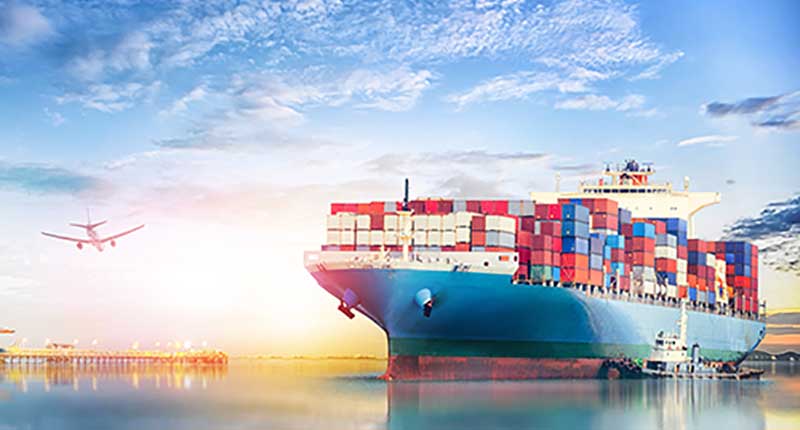Full truckload (FTL) and less-than-truckload (LTL) are the main modes of truck shipping. Except for express delivery, FTL and LTL shipping are popular in the final shipping to Amazon FBA warehouse. While choosing the best ways that suit your cargo delivery, it is critical to be familiar with the difference between LTL and FTL. On this page, let’s give insight into LTL vs. FTL shipping involving meaning, discrepancy, and how to choose the best one.
What is LTL shipping?
LTL freight shipping, in simple words, means your cargo only fills a portion of the truck container. The truck carrier would pick up the goods from other shippers or distributors to stuff the rest of the truckload volume.
For LTL shipments, you merely need to pay for the truck space you used which will minimize your costs. It is a great and cost-effective option for entrepreneurs that ship in small quantities.
What is FTL freight?
FTL shipping means you pay for the entire truckload no matter whether your goods are full of one truckload. FTL freight always remains on the same truck and has no transit during cargo shipping, so the risk of goods damage is remarkably reduced. It is much faster than LTL shipping because of no load transfers. It is suited for high-risk transport or rapid delivery.

What is the difference between FTL and LTL?
Now you have understood the basic meaning of FTL and LTL freight which works the same as FCL and LCL. It is time to know the thorough difference between FTL vs. LTL.
Handling
As we have mentioned above, FTL shipping decreases the risk of damage or loss of items because it would not transfer your goods anywhere else during cargo freight. Contrary to FTL freight, LTL shipping may be loaded and unloaded the goods multiple times to take up one truckload before it arrives final target address.
While the vast majority of LTL freight shipments are delivered intact, the added handling means a greater risk of potential product damage or freight claims compared to a Full truckload.
Delivery time
Since LTL freight shipments involve more than your cargo shipping, they often require stops and transfers many a time before reaching their final destination. The transit route of LTL freight will be more complicated.
Typically, FTL shipments are picked up and delivered on the same truck which will reduce lead times. If you need to move faster and safer, it is better to work with FTL freight.
Transport volume
FTL vs. LTL freight shipment is different by cargo size. Generally, less-than-truckload shipping is used for small freight weighing 150 to 10,000 pounds. FTL freight, on the other hand, arrives destination in full truckloads and often weighs 20,000 pounds or more.
FCFS window
FTL shipping carrier can give precise appointment times cause it does not need to pick up goods from others. But with freight LTL shipping, the truck driver should be flexible to take and deliver the cargo many times. In addition, the first-come-first-serve (FCFS) windows of freight shipping LTL can not assure the pickup time.
Freight class pricing
LTL carrier focuses on a smaller capacity of goods and leaves room for other shippers’ cargo. If your cargo freight only occupies one-fourth of the container on the truck, you only pay for the places you have taken up. But since the LTL shipping freight class, the shipping rates will be mighty distinct even though the cargo is in the same lane and pallets.
The freight class is established by the National Motor Freight Classification (NMFC). It aims to help you calculate your shipping cost based on the difficulty of shipping the commodities and the responsibilities involved.
With FTL freight, you only need to declare whether the items are dangerous goods, have pallets, and have their total weight to get accurate quoting. Generally, FTL shipping doesn’t request freight class. Its pricing standard is according to the truck shipping type(dry van or refrigerated and so on), fuel, milage cost, etc.
Before starting truck shipping, you should properly determine whether your goods need to price with a freight class. If you don’t know the freight class details, you can check with the Airsupply logistics company to help you solve this problem.
Other aspects
When you work with FTL logistics, the carrier may stop at a weigh station to examine that the truck is under the legal limit of 80,000 pounds after being loaded. Aside from this, product inspections are generally not performed again. FTL shipping will take the goods straight to your hand in a predetermined route without transit.
In freight LTL shipping, drivers are responsible for re-inspect any good upon its arrival at the origin terminal. If the goods situation is divergent from the product descriptions listed on the bill of lading, then the LTL freight carrier will reclassify the freight and make an updated quote. Shipping cargo via LTL shipment typically takes longer than FTL freight.
The difference between LTL and FTL is not only reflected in processing ways and transit routes but also in the shipping pricing. FTL freight quotes may be in ton/km, while LTL shipping quotes would be in kg/km. You can get unlimited instant LTL and FTL quotes from Airsupply’s professional team.
Which one should you choose: LTL vs. FTL?
When determining the FTL vs. LTL freight shipping for your cargo transportation, you should consider several factors according to your business needs.
Cargo weight
LTL shipping is ideal for businesses that have cargo freight under 10,000 pounds and does not request a full truck. In contrast, FTL shipment is appropriate for bulky transportation that exceeds 10,000 pounds. Or you also can cooperate with FTL freight if your cargo has occupied over 12 pallets at one time.
If you can not decide if your cargo better fits FTL or LTL size, you can consult a reputable freight carrier to check them out. Such as Airsupply, working as a freight forwarder for more than ten years, helping tens of thousands of shippers start various cargo shipping and ULD build-up safely and fastly.
Speed
If you need the goods urgently and budget is not a constraint (even if your load weighs less than 10,000 pounds), FTL shipping is the best solution. After leaving the warehouse, it is shipped by a specialized truck, without stopping or transiting in the middle, and can deliver the goods the first time. It is a beneficial way to increase your customer’s experience.
Cost
If your goods are not too much and have limited capital, choosing LTL freight can save transportation costs for you. Under normal circumstances, if the FBA warehouses are not too remote, the timeliness of LTL shipping can also meet your basic needs.
Shipping risk
Before you select FTL or LTL shipment, you should judge if your goods are delicate and fragile. If you want to transport with less risk, choose FTL freight because of LTL’s unpredictable route. There are multiple transfers or truck switches in freight LTL shipping ways than FTL. It increases the risk of damage or loss of items. But if your good is solid and resistant, LTL freight can be a superb choice to alleviate your costs.
How does ASL help you with FTL vs. LTL shipping?
Airsupply Logistics, an expert freight forwarder, offers multiple shipping options and customized strategies to help your international shipping trade. Meanwhile, it also provides flexibility, diversity, and timeliness for you when cargo transportation.
Whatever FTL vs. LTL freight shipping, the Airsupply’s team has rich experience and professional tech to finish well. It is dedicated to taking care of the entire shipping process overseas or from China to the Amazon FBA, etc. To gain more about ASL freight services and check out competitive LTL and FTL shipping prices, contact the ASL official team promptly!




